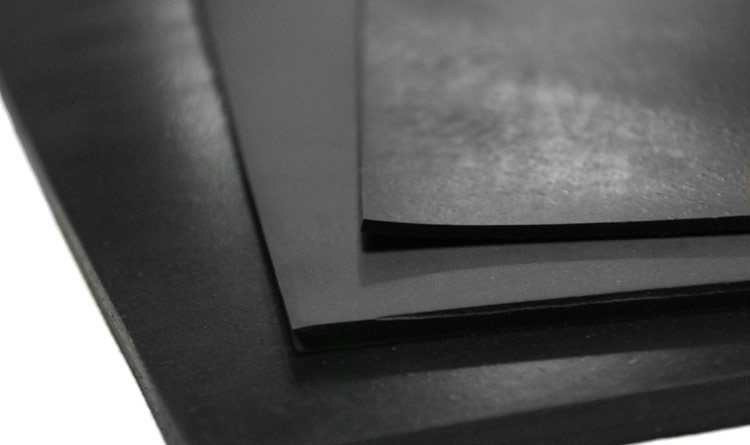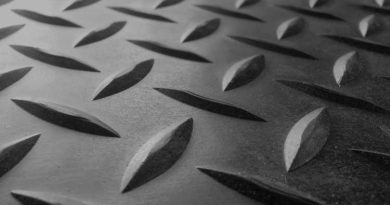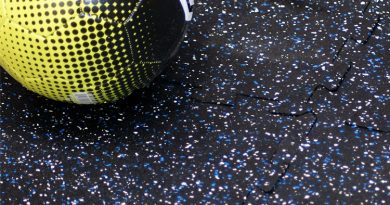All About EPDM Rubber
EPDM rubber, or ethylene propylene diene monomer rubber, is known for its superior environmental resistance properties that make it the superior outdoor rubber. Due to this, EPDM rubber is often used outdoors where they are exposed to damaging UV rays, ozone, oxygen, and moisture. However, EPDM also retains excellent resistance to abrasions, impacts, and chemicals, allowing them to be used in caustic industrial settings. In addition, EPDM is available in both solid and foam sheets both retaining the same environmental resistance properties. Below are some commonly asked questions about EPDM rubber and how they are used.
What is EPDM Rubber Used for?
EPDM rubber is primarily used to make durable industrial parts that are ideal for both indoor and outdoor use. EPDM, both solid and cellular, are highly valued materials in industrial for its physical strength and resistance to most industrial chemicals. EPDM, or ethylene propylene diene rubber, is best known for its superior resistance to damaging environmental factors, such as UV rays, ozone, oxygen, and moisture.
EPDM rubber is popularly used for industrial and residential applications, such as seals and gaskets, weatherstripping, and thermal/electrical insulation due to its excellent flexibility, heat resistance, and environmental resistance properties. Solid EPDM sheet rubber retains excellent tensile strength, low compression set, and is offered in a 60A durometer hardness rating which allows it to efficiently absorb the force of impact.
Cellular EPDM is best used for highly compressive applications because its porous structure allows it to be compressed even further for applications that require a tight seal. Furthermore, due to its cellular structure, open and closed cell EPDM are often used as thermal or electrical insulators. Regardless of its form, EPDM sheet rubber can be used outdoor without worry of UV or ozone damage.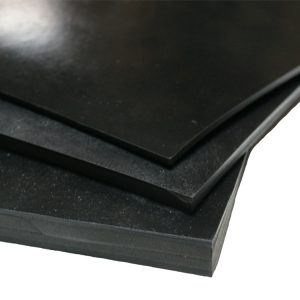
What is the Difference Between EPDM and Natural Rubber?
EPDM rubber and natural rubber differ in the sense that EPDM is a 100% man-made material whereas natural rubber is a plant-based material made of harvested materials. EPDM rubber is made of a blend of strengthening chemicals whereas natural rubber is made from the latex sap found in rubber trees. The unique blend of chemical compounds used to create EPDM rubber sheeting gives it enhanced durability making it one of the best outdoor rubber options available.
The largest difference between synthetic EPDM rubber and natural rubber can be seen through their physical properties. EPDM is highly resistant to damaging effects of UV rays, ozone, and moisture whereas natural rubber will not be able to stay in these conditions for extended periods of time. Although both rubbers can be used as general-purpose rubber, EPDM retains a higher tensile strength and a lower compression set than natural rubber.
EPDM and natural rubber have excellent chemical-resistance properties that allow them to provide protection against chemicals and solvents. Natural rubber part is generally resistant to most organic salts, ammonia, acids, and alkali solutions. On the other hand, because EPDM is a synthetic rubber, it is resistant to more caustic chemicals than natural rubber. Due to this, EPDM will outlast natural rubber and will provide reliable applications in industrial settings.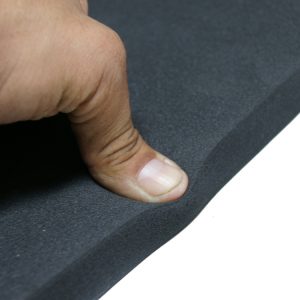
What is EPDM Foam?
EPDM foam is lighter and more porous than solid EPDM, but it is still a resilient and long-lasting material that is ideal for industrial applications. Available in open and closed cell forms, EPDM foam excels in highly compressive applications as its porous structure is able to offer a tighter seal. Despite their porous nature, EPDM foam still retains excellent resistance to harsh UV rays, ozone, and oxygen.
EPDM foam is created when gases are introduced into the material during its production process. Closed cell EPDM foam is differentiated by their smaller and tight-knit structure of air pockets. Due to this, closed cell EPDM has an absorption level of less than 5% allowing it to keep moisture on its surface longer without seeping through the material. These properties of closed cell EPDM foam makes it a valued material often used in outdoor marine settings.
On the other hand, open cell EPDM is an extremely porous material that is made up of large air pockets that can be seen with the naked eye. Compared to closed cell EPDM, it is a much more porous and permeable material that is not resistant to moisture and will absorb liquids upon contact. Open cell EPDM foam is best used for noise insulation because its highly porous open cell matrix allows the energy of sound to dissipate within its structure to reduce the amount of noise produced.
Don’t forget to check out our solid and foam EPDM rubber sheets! Click here.

